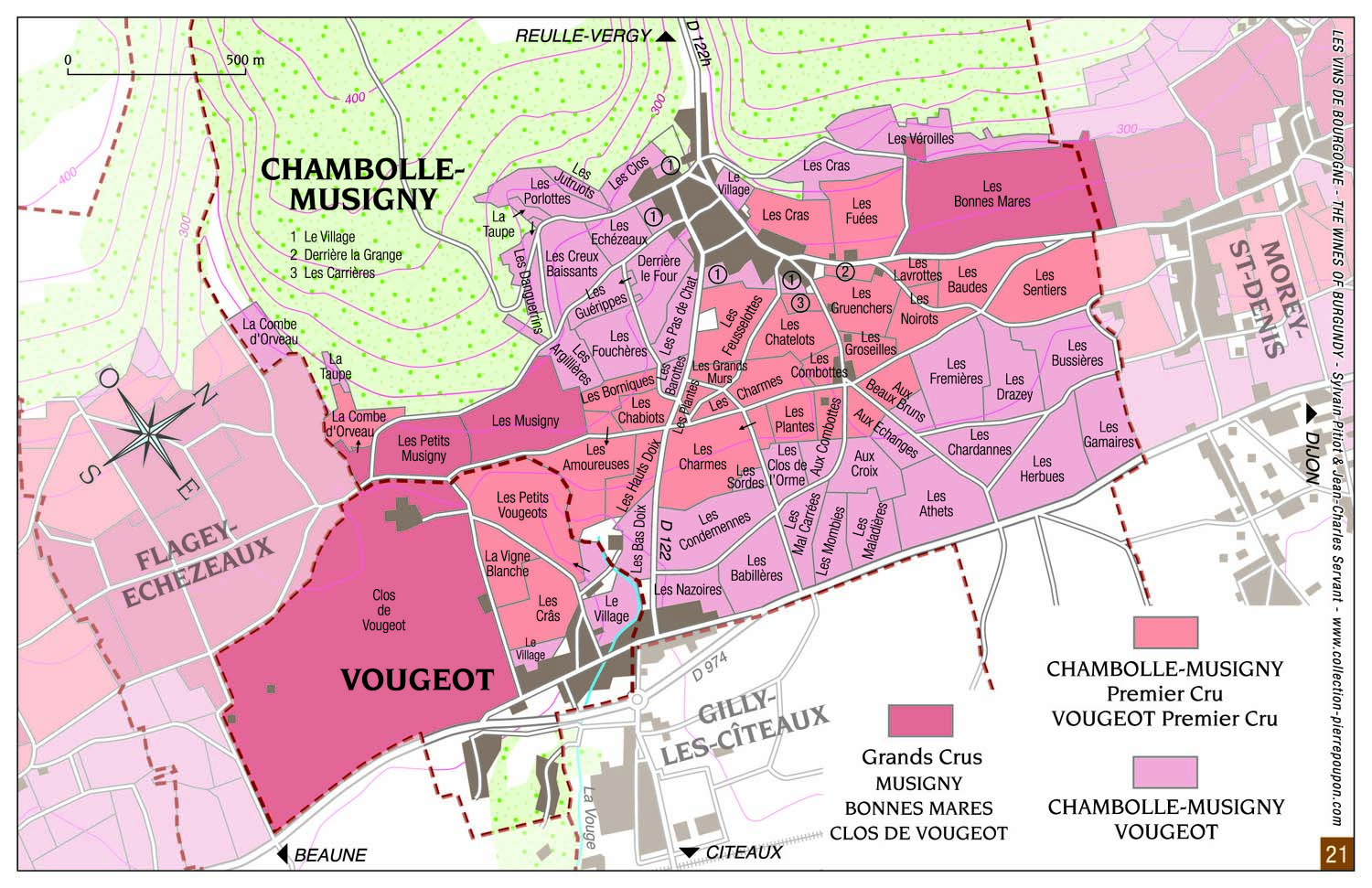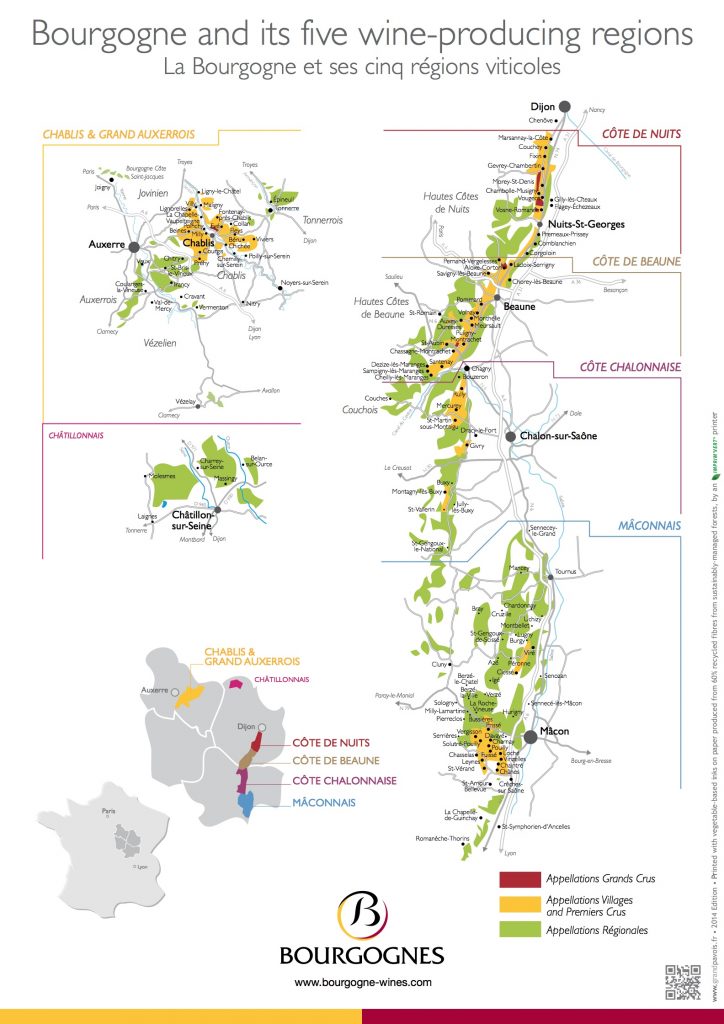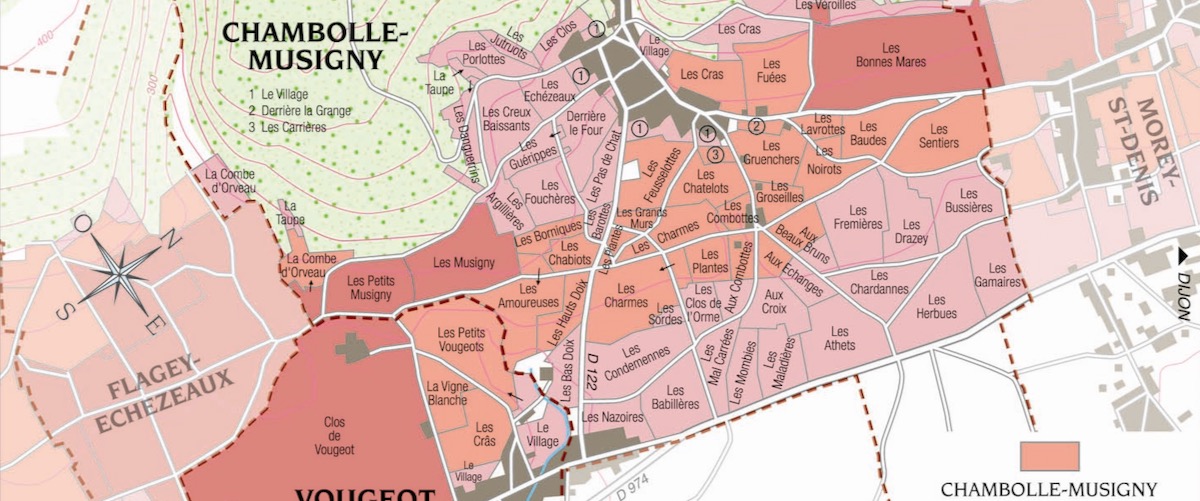We’re headed further south along the Côte de Nuits to the village of Chambolle-Musigny
In this series, we’re covering as many of the main villages of Burgundy, home to some of the world’s greatest Pinot Noir and Chardonnay.
Make sure you join our community to get the latest articles from the Wine Bites Mag as they come out. You’ll find all of our Burgundy related articles here.
There’s a quick refresher on the regions of Burgundy at the end of this post to help you place yourself within Burgundy and France as a whole.
See all of our wines from Chambolle-Musigny
The Villages of Chambolle-Musigny
On the southern border of Morey-Saint-Denis lies the appellation of Chambolle-Musigny. Its AOC status dates from September 1936, making it one of the first French vineyards to be designated.
Like Gevrey-Chambertin, Chambolle-Musigny is completely planted to Pinot Noir. However, the styles associated with the respective appellations present an intriguing contrast. Where Gevrey-Chambertin has a reputation for powerful, structured Pinot Noirs, Chambolle-Musigny typically offers more delicate expressions. This is not to suggest that Chambolle-Musigny is a wilting violet; rather its intensity manifests in more subtly, with soft tannins and pretty aromatics.
Chambolle-Musigny is home to two superb Grands Crus: Bonnes-Mares, which links its vineyards to those of Morey-Saint-Denis, and the great Musigny vineyard, which overlooks the Clos de Vougeot. The village also boasts among its fine wines the prestigious Premier Cru, Les Amoureuses.
The appellation’s sloping vineyards face east at altitudes of 250-300 metres with only a shallow covering of soil overlying the parent rock, but fissures in the hard Jurassic limestone allow the roots to seek nourishment deep within the sub-soil. Boulders and gravels in the valley bottom ensure good drainage.
This video provides an overview of the Côte de Nuits and explores the villages of Gevrey-Chambertin, Morey-Saint-Denis and Chambolle-Musigny in more detail.
Explore Chambolle-Musigny through the eyes of Christophe Roumier of Domaine Georges Roumier film (in French).
Veronique Drouhin explores the characteristics of the villages of Gevrey-Chambertin, Morey-Saint-Denis and Chambolle-Musigny.
In the video below we explored the 3 adjacent villages Chambolle-Musigny, Morey-Saint-Denis & Gevrey-Chambertin tasting through wines from each Village.
UPDATE December 2017: The Charmes-Chambertin tasted in the video has started to settle and my initial concerns around ripeness are well and truly a distant memory! Unfortunately, it’s all sold out!
Detailed Map of Chambolle-Musigny
Click on to enlarge 🔎

The Regions of Burgundy
The best bit of Burgundy is a thin strip running from North to South around 50km in length, to the South East of Paris
It’s split into three main regions, within each of these regions there are villages which have specific single vineyards planted in them to the varieties red varieties: Pinot Noir and Gamay, and the white varieties: Chardonnay and Aligoté, a lesser variety that produces some fun wines at more affordable prices.
The three main regions in the strip South of Dijon are:
- Côte D’Or – meaning the Golden Slope, derived from it’s original name, Côte d’Orient, East Slope, within which rest:
- Côte-de-Nuits – South of the city of Dijon and North of the town of Beaune famous for it’s Pinot Noir. The best known villages are: Gevrey-Chambertin, Morey-St-Denis, Chambolle-Musigny, Nuits-St-Georges and Vosne-Romanée. 5% of Burgundy production including Chablis.
- Côte-du-Beaune – The area around and South of Beaune famous for Chardonnay including the 5 Grand Cru vineyards and many very good Pinot producing vineyards. The best known villages are: Puligny-Montrachet, Chassagne-Montrachet, Mersault, Volnay, Pommard and Saint Aubin. 10% of production including Chablis.
- Côte-Chalonaise – Mixing more affordable Chardonnay and Pinot that can be of excellent quality. The villages of Rully, Mercurey and Givry producing their best wines.
- Mâconnaise – The least regarded of the main regions, still capable of producing some very good wines. Becoming a shining light for value with the ever increasing prices of Burgundy.
In addition to these, the two regions of Beaujolais, mostly producing Gamay, (at the South end of the Dijon Strip) and Chablis, mostly producing Chardonnay (between the southern part of Champagne and Dijon) are part of the Bourgogne wine region.


You must be logged in to post a comment.